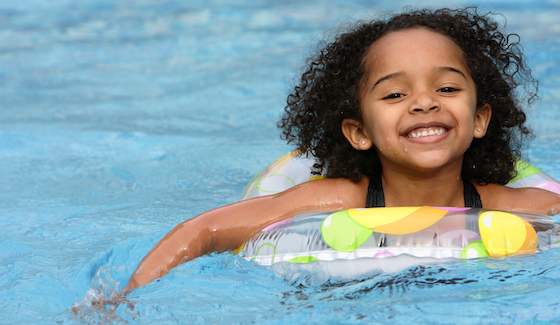- MENU
- HOME
- SEARCH
- WORLD
- MAIN
- AFRICA
- ASIA
- BALKANS
- EUROPE
- LATIN AMERICA
- MIDDLE EAST
- United Kingdom
- United States
- Argentina
- Australia
- Austria
- Benelux
- Brazil
- Canada
- China
- France
- Germany
- Greece
- Hungary
- India
- Indonesia
- Ireland
- Israel
- Italy
- Japan
- Korea
- Mexico
- New Zealand
- Pakistan
- Philippines
- Poland
- Russia
- South Africa
- Spain
- Taiwan
- Turkey
- USA
- BUSINESS
- WEALTH
- STOCKS
- TECH
- HEALTH
- LIFESTYLE
- ENTERTAINMENT
- SPORTS
- RSS
- iHaveNet.com: Health
Sue Hubbard, M.D.

In the summer, many families create memories and cool down at the beach, lake, or pool. Of course, the main concern is fun, but the first thing that comes to my mind when I think of water is safety.
Knowing that over 900 children between the ages of 1 and 14 drown each year, a discussion of water safety procedures is a necessary part of summer routines. Astoundingly, reports show that 9 out of 10 children who drown are "under supervision."
The AAP has not gone so far as to routinely recommend mandatory swimming lessons for this age group, but does endorse swimming lessons for younger children who are frequently exposed to water and are emotionally and physically able to participate. The AAP does not recommend formal "infant survival swimming lessons" for children under the age of 1 year.
When I discuss water safety with my patients, I emphasize that drowning continues to be the second leading cause of death for children ages 1-19. I often have interesting discussions with parents who have a backyard pool but don't believe it's necessary to install a barrier around the pool. They may claim, "we never let our child outside alone," or their child "is always being supervised by an adult."
As you might expect, these are usually first-time parents who've yet to experience the cunningness of a toddler. Just as our children watch us and learn how to feed themselves, drink from a cup, or climb out of a bed, they also watch us open doors and use a stool to reach something. A toddler is more than capable of figuring out how to open a door, even one with lock, or climb out a window and head straight for the pool.
Drowning is silent. It's not like in the movies, accompanied by screaming and lots of noisy thrashing. The child slips quietly beneath the surface and sinks. It only takes minutes, but the consequences of drowning are devastating. Even for a child who's found and resuscitated, there may be a life-long brain injury. Worst of all, the child may die.
All families with a pool should install a 4-sided fence that's at least 4 feet high to limit pool access. It should be difficult to climb and have a self-latching, self-closing gate. The arguments I hear about "landscape aesthetics" fall on deaf ears. Every family should also know CPR.
Sign your child up for swimming lessons, and have fun practicing flutter kicks and arm strokes together. Just be sure there's an adult within arm's reach of all novices -- and a fence around the pool!
Dr. Sue Hubbard is a nationally known pediatrician and co-host of "The Kid's Doctor" radio show.
Available at Amazon.com:
Copyright © KIDSDR.COM DISTRIBUTED BY TRIBUNE MEDIA SERVICES, INC.
AGING | ALTERNATIVE | AILMENTS | DRUGS | FITNESS | GENETICS | CHILDREN'S | MEN'S | WOMEN'S
Health - Remember, Drowning Is Silent